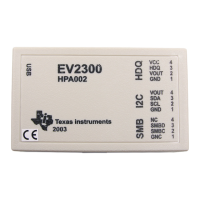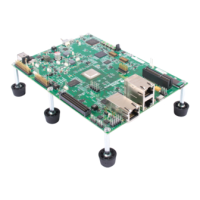Overview of Thread Scheduling
4-2
4.1 Overview of Thread Scheduling
Many real-time DSP applications must perform a number of seemingly
unrelated functions at the same time, often in response to external events
such as the availability of data or the presence of a control signal. Both the
functions performed and when they are performed are important.
These functions are called threads. Different systems define threads either
narrowly or broadly. Within DSP/BIOS, the term is defined broadly to include
any independent stream of instructions executed by the DSP. A thread is a
single point of control that can contain a subroutine, an interrupt service
routine (ISR), or a function call.
DSP/BIOS enables your applications to be structured as a collection of
threads, each of which carries out a modularized function. Multithreaded
programs run on a single processor by allowing higher-priority threads to
preempt lower-priority threads and by allowing various types of interaction
between threads, including blocking, communication, and synchronization.
Real-time application programs organized in such a modular fashion—as
opposed to a single, centralized polling loop, for example—are easier to
design, implement, and maintain.
DSP/BIOS provides support for several types of program threads with
different priorities. Each thread type has different execution and preemption
characteristics. The thread types (from highest to lowest priority) are:
❏ Hardware interrupts (HWI), which includes CLK functions
❏ Software interrupts (SWI), which includes PRD functions
❏ Tasks (TSK)
❏ Background thread (IDL)
These thread types are described briefly in the following section and
discussed in more detail in the rest of this chapter.
4.1.1 Types of Threads
The four major types of threads in a DSP/BIOS program are:
❏ Hardware interrupts (HWI). Triggered in response to external
asynchronous events that occur in the DSP environment. An HWI
function (also called an interrupt service routine or ISR) is executed after
a hardware interrupt is triggered in order to perform a critical task that is
subject to a hard deadline. HWI functions are the threads with the highest
priority in a DSP/BIOS application. For a DSPs running at 200 MHz,
HWIs should be used for application tasks that need to run at frequencies
approaching 200 kHz and that need to be completed within deadlines of
2 to 100 microseconds. For faster DSPs, HWIs should be used for task
that run at proportionally higher frequencies and have proportionally

